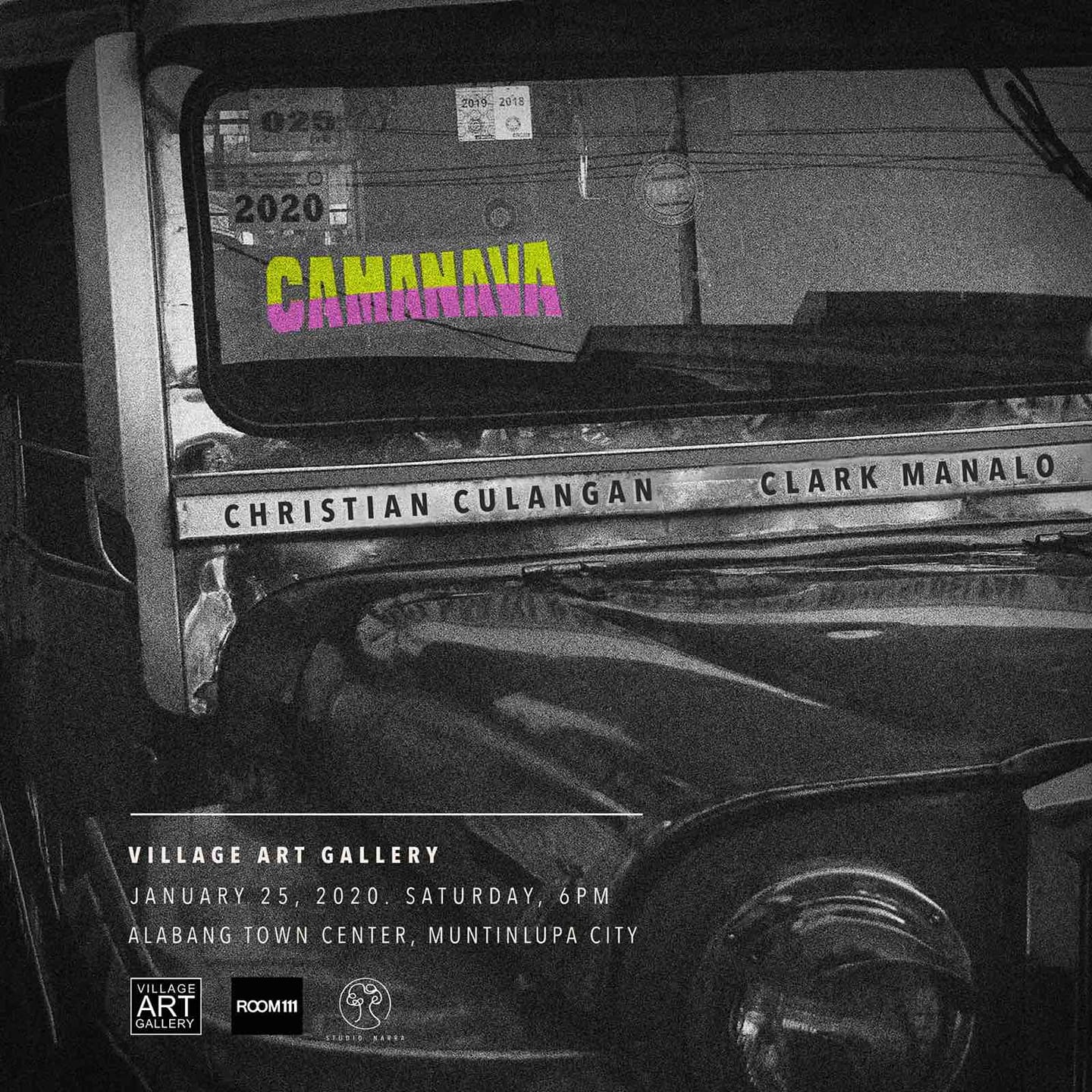Christian Culangan and Clark Manalo

Opening Reception
Saturday, January 25, 2020 | 6 PM
Village Art Gallery
Alabang Town Center, 1770 Muntinlupa City
Caloocan, Malabon, Navotas, Valenzuela, found due north outside Manila. Silent, echoing warehouses and hidden factories sustaining the dwellers in this usually overlooked region, a fish port and pier on its west, carrying loads of shipments from the opposite end of the world. Like ants scuttling around chasing opportunities, dusks and dawns- each calls a time to end the day’s toil or wether to continue. Never minding the repetition, the routinely labor that every passing week entails, by which each morning is a cycle of waking, getting ready for the day’s chores, traversing through Manila’s loud and often perilous commute and dealing with the familiar banter and haggling through city markets.
At the end of the day, each repetitive laborious routine paves way for another- and then another, not knowing when and how the cycle breaks, whether there would be a chance, or even a choice to break free from this never ending pattern.
In CaMaNaVa, Christian Culangan and Clark Manalo attempts to dabble with the observation around the typical Filipino labourer’s struggle to sustain a compulsory cycle that feeds and keeps oneself and his family alive. Where both artists grew up, waking to the noise of the north outside Manila, where the city never sleeps, the scuttling of the community to and from each feat, the movement of each individual that sustains the progress of the city. Each individual’s awareness of their underlying dependence on this rough, loud and unpredictable commerce that their city provides is the idea of this dialogue.
The provision forms a unique ecosystem of inhabitants heavily reliant on the bustle of the morning’s imports, delivery and factory work became the norm ergo, becomes the system that every labourer tries to thrive and survive in. Nevertheless, knowing that everyone is the pillar from the smallest individual to the largest sector of this labour-centered structure gives one a sense of togetherness, of communal struggle, working on the flow and hopefully, eventually, either breaking the pattern of this labor or towards the betterment of lives inside this community that sustains this tumultuous system of labor, pattern, and privilege of choice or none thereof.
Clark Manalo’s pulsating, glitching visual noise that resembles the ruckus of the city is a rubble of visual memory and muddled perception that captures the abrupt in motion, resulting in fragments of remembrance- of a photo, or a sight, maybe even of sensory memory, a smell, or a faint audible noise-the attempt to frame the abrupt, the sudden but routinely movement of the odd and often misaligned community that surrounds Clark is the contrast to Christian Culangan’s subjects that are almost too familiar, intimate, static, people at the brink of loss inside one’s memory but still insist on leaving a silhouette of them in your mind, if it hadn’t been for the gaze directly staring, these people could have been of distant memory or of a vision, lost.
Christian Culangan’s work deeply rooted in the character and the livelihood of his hometown, Caloocan- where warehouses of textiles and households thriving through acquired heirloom skill in tailoring and dress making, Culangan found anchoring in his work through using clippings of old fabrics into his canvas, as well as the using zippers as a form of visual metaphor on opening, unraveling, and revealing whatever lies inside may it be an idea of- or a concept rendered through memory, experience, and growth. While Clark Manalo’s body of work finds commonality in mutual unintentional and ignored futility we all share, resulting in societal defects, portrayed as glitches, throbbing visual interpretation of mistakes, censorship and disarray. The two found common ground for CAMANAVA, due to the fact that their neighbouring hometowns share almost the same identity, bred the same kinds of jobs, opportunities therefore, raise, almost and identical behaviour among it’s folk- resilient, hardworking, often under payed and overlooked, but striving and surviving in a city that provides for those who toil hard enough, and provide for those efficacious enough to continue through the demands of living in CAMANAVA.
Opening reception on Saturday January 25 at 6Pm. Village Art Gallery is locatd at the upper ground floor Alabang Town Center, Muntinlupa City.
For inquiries you may send us a DM or you may reach us at 88507710 and villageartgalleryatc@gmail.com






























